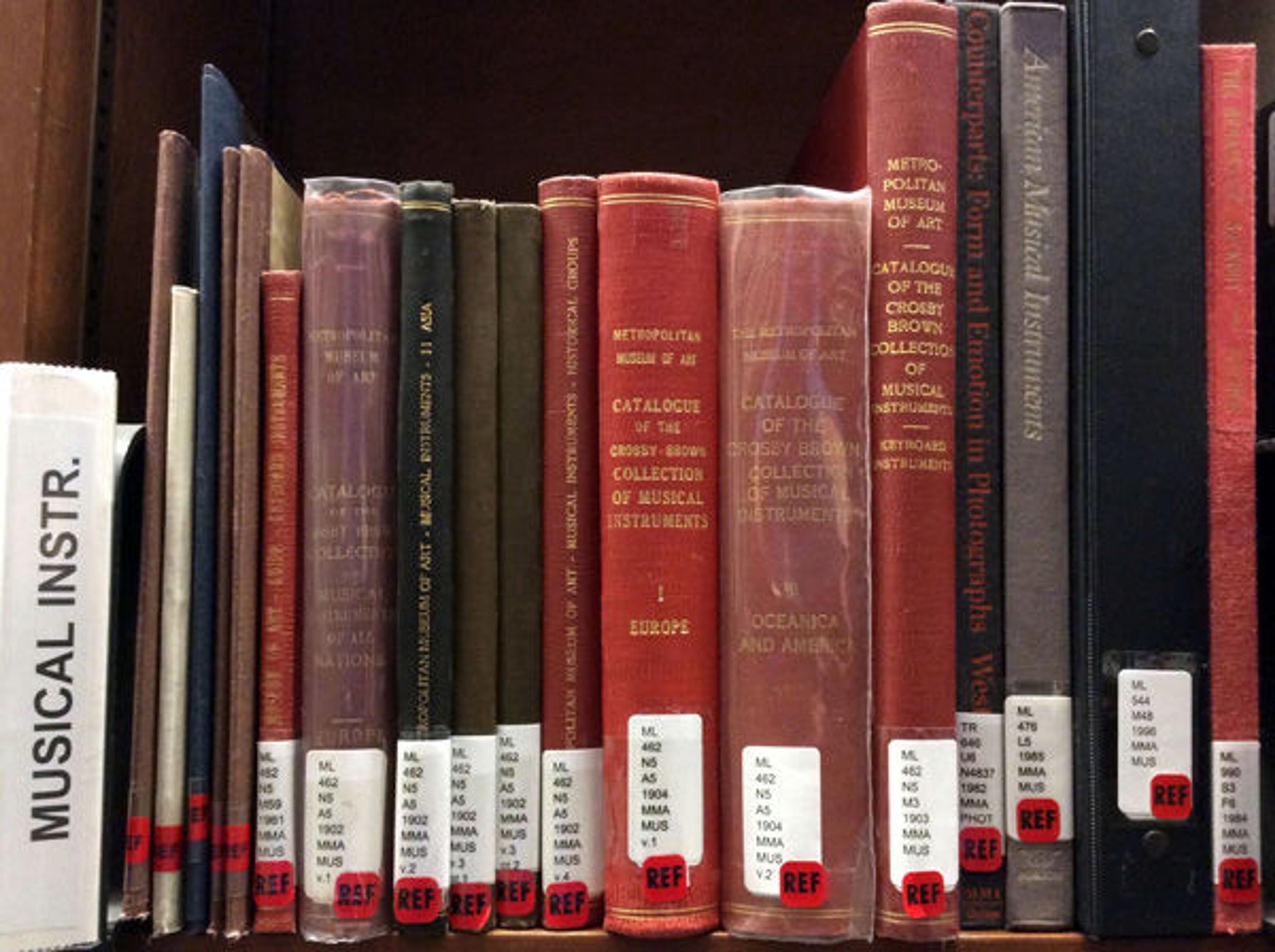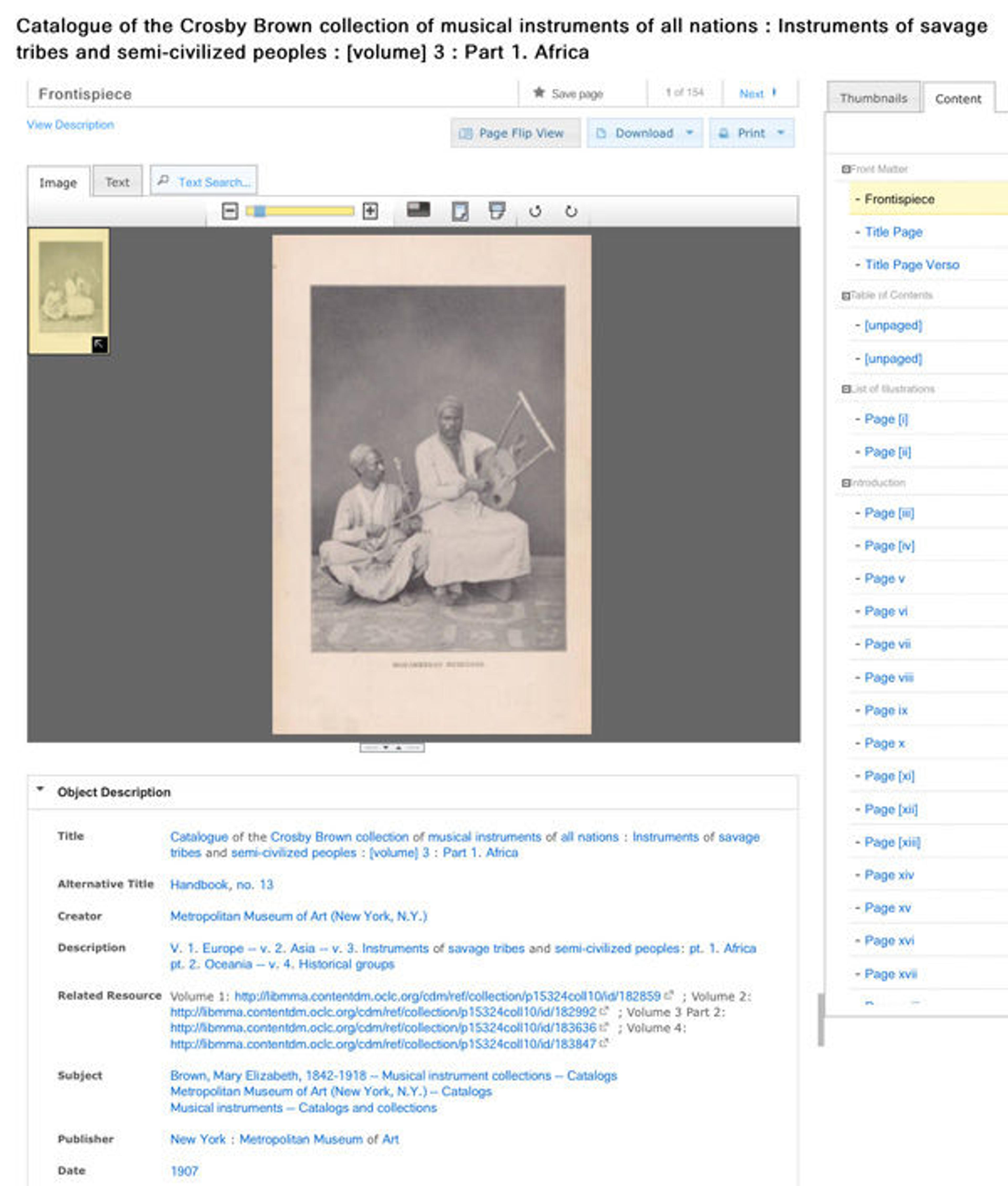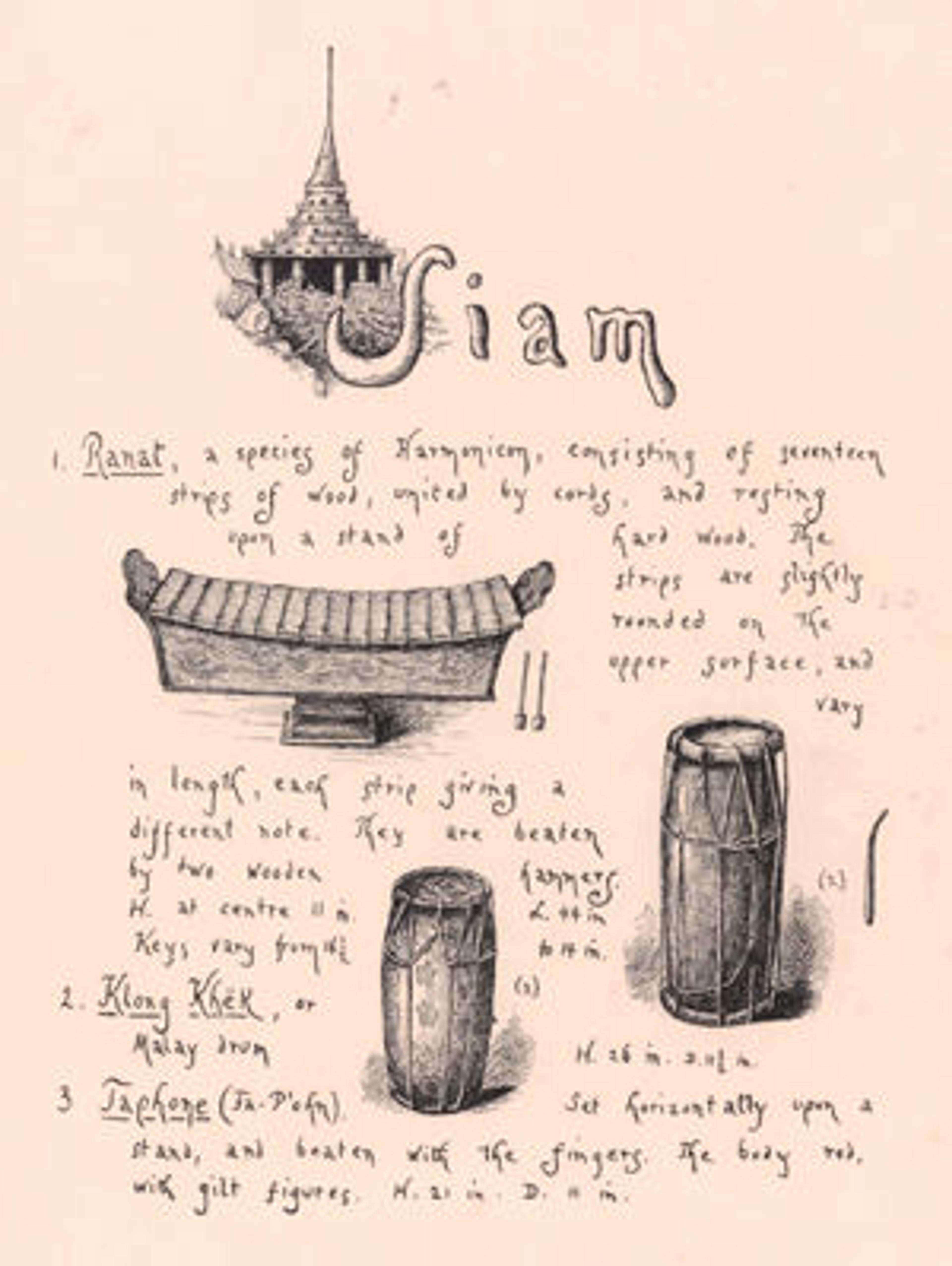Digitizing Met History: The Crosby Brown Catalogues
![Title page from "Preliminary Catalogue of the Crosby-Brown Collection of Musical Instruments of All Nations: [Volume] I, Gallery 27"](https://cdn.sanity.io/images/cctd4ker/production/73eb9c38c54d7f2161b7fe2bdeb900512f8e05dc-600x951.jpg?w=3840&q=75&fit=clip&auto=format)
Title page from Preliminary Catalogue of the Crosby-Brown Collection of Musical Instruments of All Nations: [Volume] I, Gallery 27, the first catalogue of the Crosby Brown Collection of Musical Instruments to be published by The Metropolitan Museum of Art, 1901
«In honor of the 125th anniversary of the first gift of musical instruments to The Metropolitan Museum of Art, the Thomas J. Watson Library recently digitized the complete set of catalogues of the Crosby Brown Collection of Musical Instruments. These catalogues, dating from 1888 through 1915, document the remarkable growth of this collection during its early years at the Met—growth which was almost entirely a result of the keen eye, strong social ties, and generous patronage of Mary Elizabeth Adams Brown.»
While we in Watson Library have been striving towards creating a comprehensive digital collection of Metropolitan Museum of Art publications for nearly five years (we have close to 1,800 items in our Museum Publications collection to date), we are continually amazed by the treasure troves we regularly find right beneath our feet in the library stacks, or through recommendations we receive from the Museum's expert curatorial staff. The latter was the case with the thirteen "Crosby Brown catalogues," as they are colloquially known. The curators in the Department of Musical Instruments are, of course, intimately familiar with these catalogues, but somehow they hadn't yet made it into the library's Digital Collections.

A selection of Crosby Brown catalogues in Watson Library's Reference Collection
So, late last spring, my colleague Dan Lipcan and I met with Associate Curators Bradley Strauchen-Scherer and Jayson Dobney to compare notes on who had what catalogues (since, after all, each curatorial department in the Museum has its own library); what condition all the different copies were in; and how we might go about digitizing the whole—and best—set, so that researchers worldwide could freely search, download, and compare high-quality, full-text digital versions of these seminal publications, all in one place.
Once the selection process was completed, the actual digitization was straightforward. Most of the catalogues were in excellent shape, which allowed us to ship the books to a trusted offsite scanning vendor. Within a few weeks we had the scans and the original books back, and after running the scans through a quality-control check, we tasked a small but mighty team of interns with creating the descriptive metadata for each individual scanned page—over 3,100 pages in all!

Screenshot of a catalogue entry in the Digital Collections. Descriptive metadata includes the object description, which appears below each image in the Digital Collections site, as well as the detailed pagination information at the right—all of which should help researchers navigate the site more intuitively. We have to be highly selective in deciding which projects get the individual pagination treatment, since it is a time-consuming process. The relatively small scale of the Crosby Brown project, as well as its 125th anniversary year, made it an easy choice for this special treatment.
All of the Crosby Brown catalogues are now freely available online through the library's Digital Collections site. In order to make navigation to these catalogues as easy as possible, we have included a link to them on the landing page for our digitized Metropolitan Museum of Art publications, as well as on the Museum Publications page here on the Met's website. We encourage first-time visitors to our Digital Collections site to view a series of short YouTube videos in order to get the most out of its functionality.

It has been such a pleasure exploring these catalogues and this collection of instruments as we have worked our way through the digitization process. The illustrations by William Adams Brown (Mary Elizabeth's son and fellow collector) that fill the pages of the very first published catalogue from 1888 are so charming and quirky, yet the instruments are surprisingly recognizable. Many of the later publications include photographs of instruments in situ, sometimes with the tribesman who would have played them—beautifully haunting moments of an era long gone.
We trust that Mary Elizabeth and William Adams Brown would be thrilled to know that their tremendous legacy lives on 125 years after their initial bequest—not only physically in the Musical Instruments galleries at the Met, but now in digital form as well. These catalogues represent years of Brown's meticulous research on musical instruments of all nations. Now, for the first time, scholars and music buffs "of all nations" have unfettered access to this groundbreaking research with a just few simple clicks.
"Siam," from Musical Instruments and Their Homes, 1888
!["Drum Grove, New Hebrides" from "Catalogue of the Crosby Brown Collection of Musical Instruments of All Nations: [Volume] II, Oceanica and America," 1913](https://cdn.sanity.io/images/cctd4ker/production/6329a1b763c8a437e572796d8ad968fac3bc1de8-600x602.jpg?w=3840&q=75&fit=clip&auto=format)
"Drum Grove, New Hebrides" from Catalogue of the Crosby Brown Collection of Musical Instruments of All Nations: [Volume] II, Oceanica and America, 1913
Special thanks to William Blueher, Walter Schlect, Kelly Turner, and Andrew Wong-Crocitto for their work on this project.
Related Link
Of Note: Posts related to Mary Elizabeth Adams Brown
Robyn Fleming
Robyn Fleming is the Museum librarian for interlibrary services and digital initiatives in Thomas J. Watson Library.